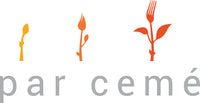
Le mot « patate » désigne le tubercule de l’Ipomoea batata. Mais on a l’habitude d’ajouter l’adjectif « douce » pour ne pas la confondre avec la pomme de terre, qui est souvent appelée « patate ». Il peut être de forme plus ou moins allongée, voire arrondie. Sa peau est fine et sa couleur varie du blanc au jaune et de l’orange au violet. Sa chair se rapproche de la châtaigne avec une texture farineuse, plutôt onctueuse, aux notes sucrées. La première mention du terme patate en français date de 1567. Le mot « patate » viendrait de l’espagnol « batata », qui l’aurait emprunté à une langue taïno ou arawak (peuples amérindiens habitants les Antilles). Le mot quechua « papa », qui désigne la pomme de terre, pourrait aussi être à l’origine du mot patate, via l’espagnol, et aurait donné le mot anglais potato. À cause de sa ressemblance, la pomme de terre s’est vue donner le surnom familier de « patate ». Mais c’est l’Ipomea batata la véritable patate. Ses origines restent mystérieuses, bien que l’on aurait tendance à opter pour l’Amérique du Sud. On ne la connait pas à l’état sauvage. La patate douce aurait d’abord fait le voyage d’Amérique vers l’Asie du Sud-Est grâce aux Polynésiens. Introduite en Chine au XVIe siècle, il faut attendre deux siècles pour sa traversée de l’Atlantique vers l’Europe. Ici, on ne mange que le tubercule. Sous les tropiques, les feuilles sont aussi consommées. On les prépare comme des épinards. L’Ipomea batata est très jolie, son feuillage est aussi très apprécié dans les aménagements paysagés. On en voit un peu partout en ville.
The word potato refers to the tuber « Ipomoea balatas » The word sweet is added to distinguish it from the regular potato. The sweet potato comes in various shapes, tubular or round. It has a thin light skin varying in color from yellow to orange to mauve. Its pulp is like a chestnut, creamy and floury with slight notes of sweetness. The first mention of the word « patate » in French dates back to 1567. The word « patate » is derived from the Spanish word « batata », which in turn was borrowed from the Taino language or the Arawak (Native American inhabitants of the Caribbean). The Quechua « papa », which means patate, might also be the origin of the Spanish word, and given it its English form, potato. Because of its resemblance, the potato was also called « palate ». But it is the Ipomea batata that is the true potato. Its origins remain a mystery, although some theorize that it comes from South America. Its wild state is unknown to us. The sweet potato travelled first from Americas towards South Asia by way of Polynesia. Introduced in China in the XVI century, it took another two centuries for it to cross the Atlantic towards Europe. Here only the tuber is eaten. In the Tropics, the leaves are also eaten like spinach. The Ipomea batata is quite beautiful and its leaves are often found in landscaping. It can often be seen throughout the city.

